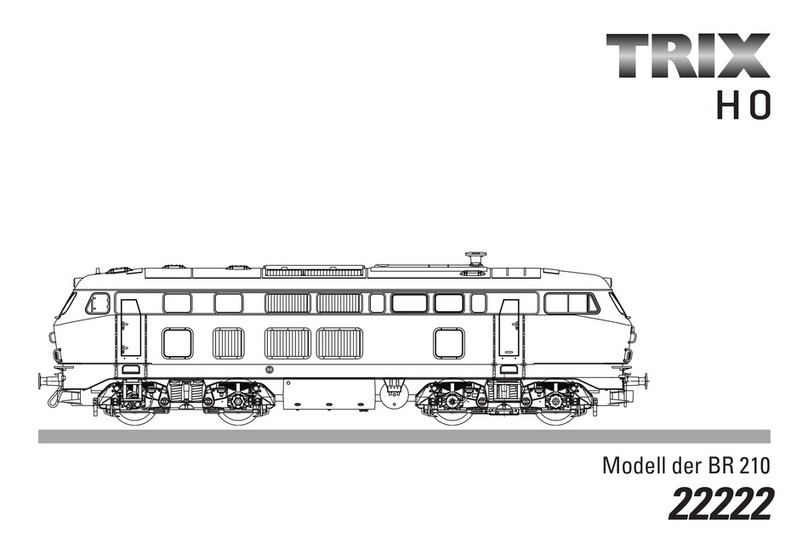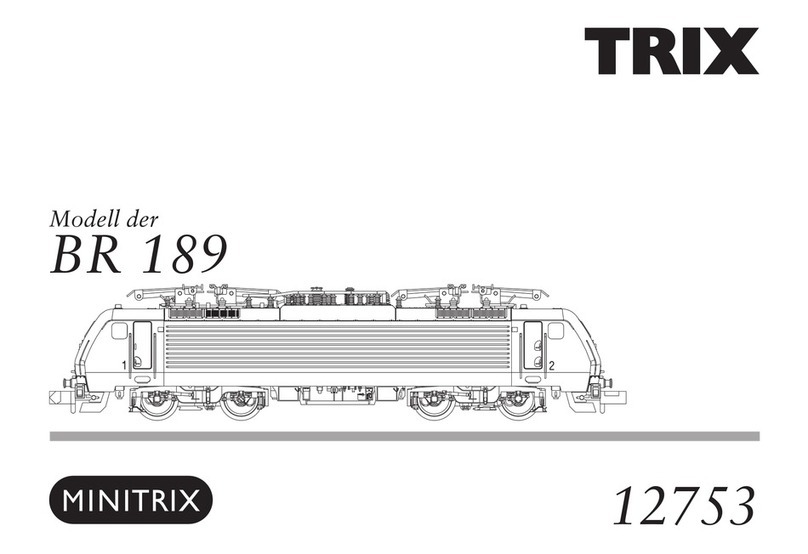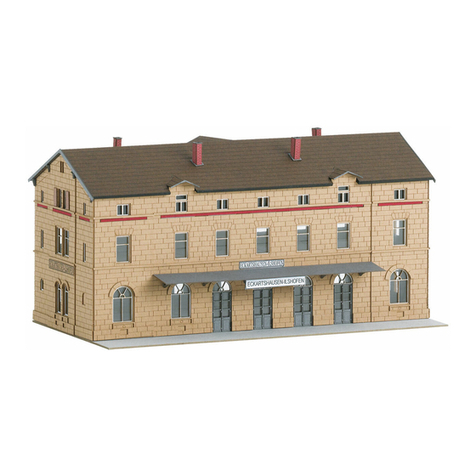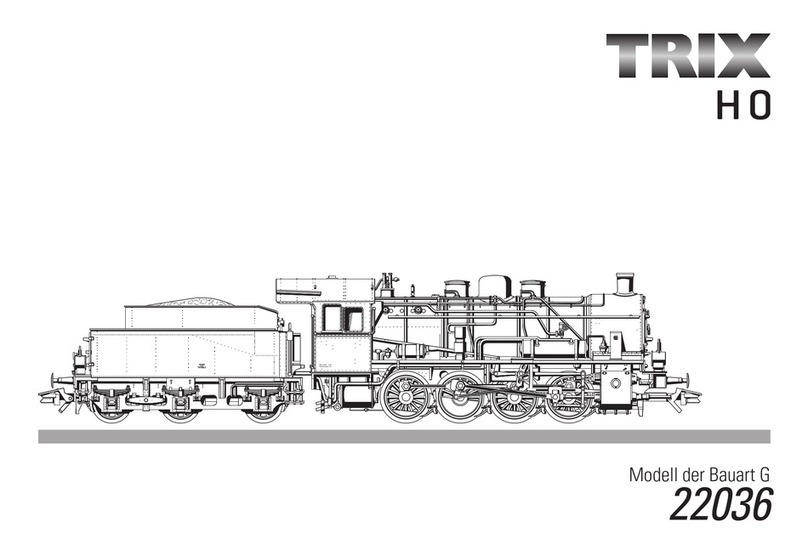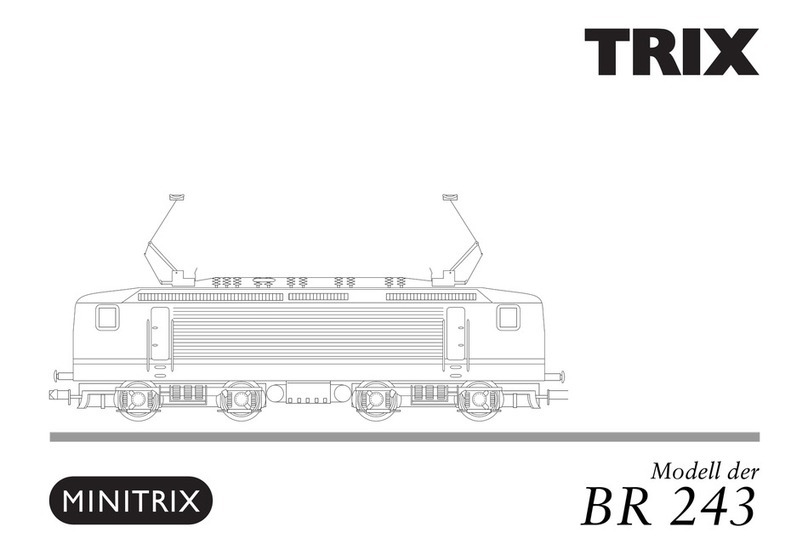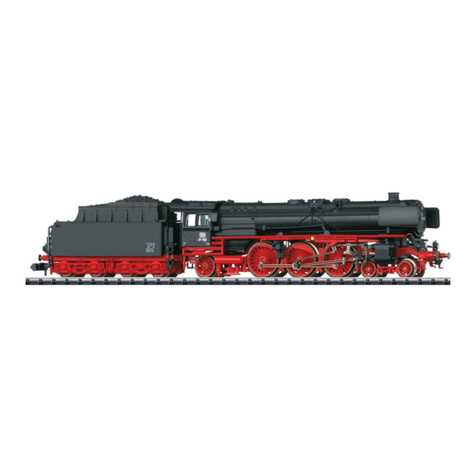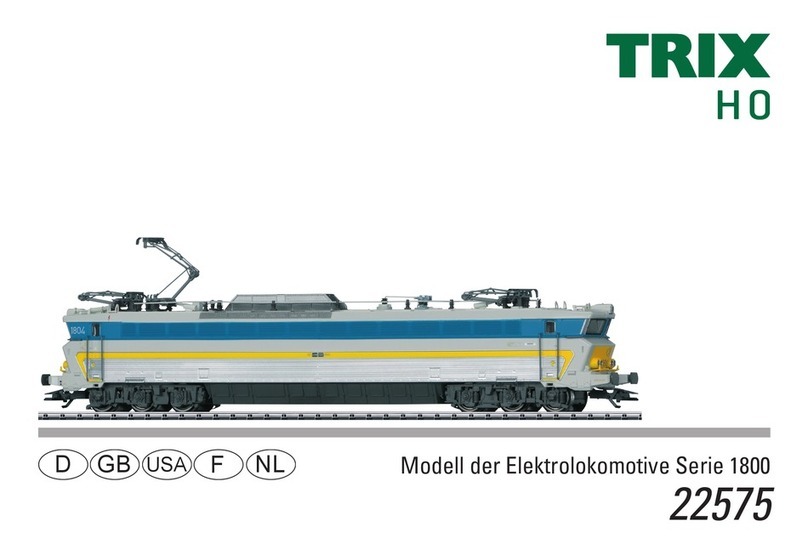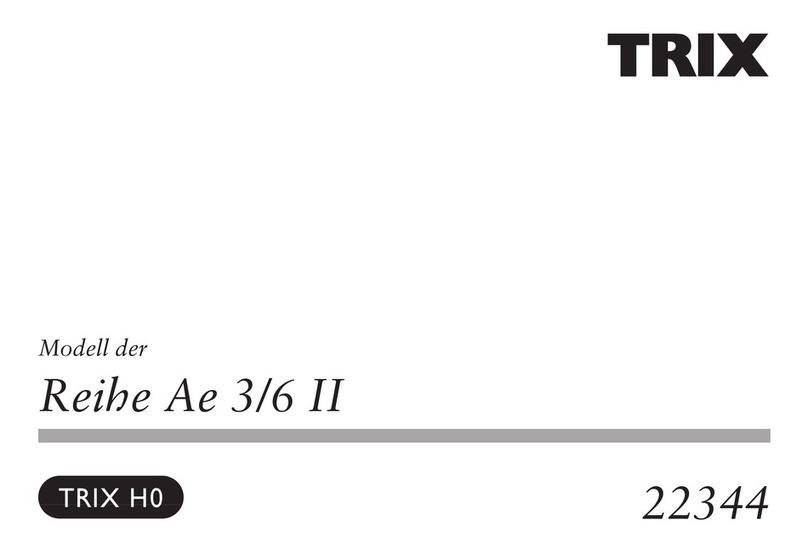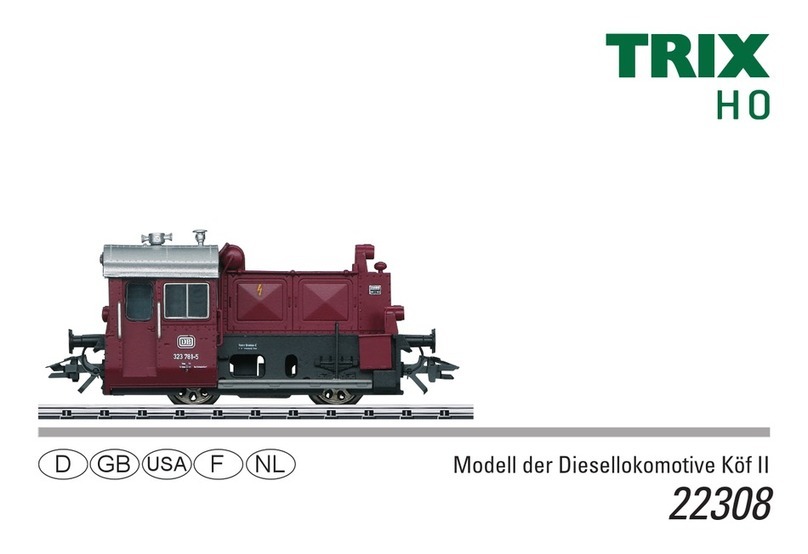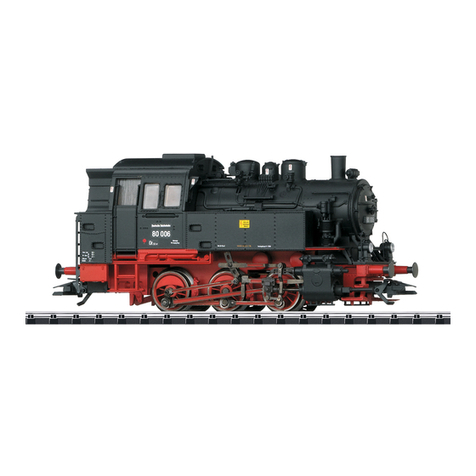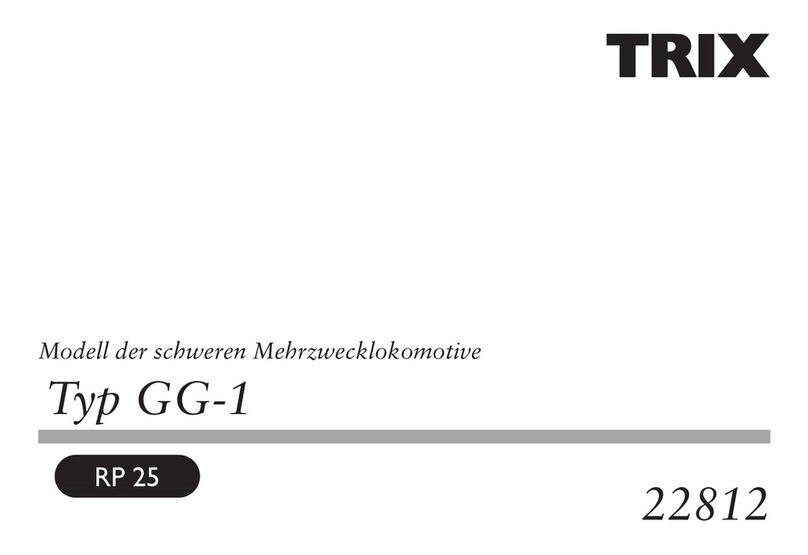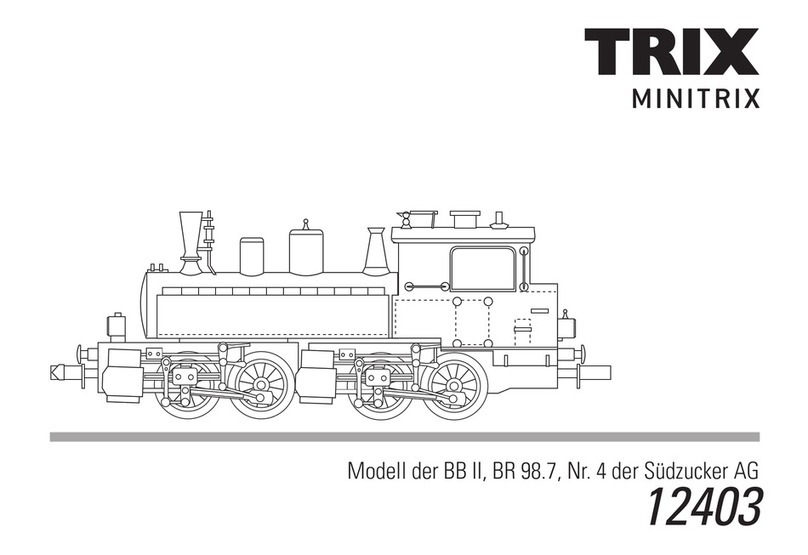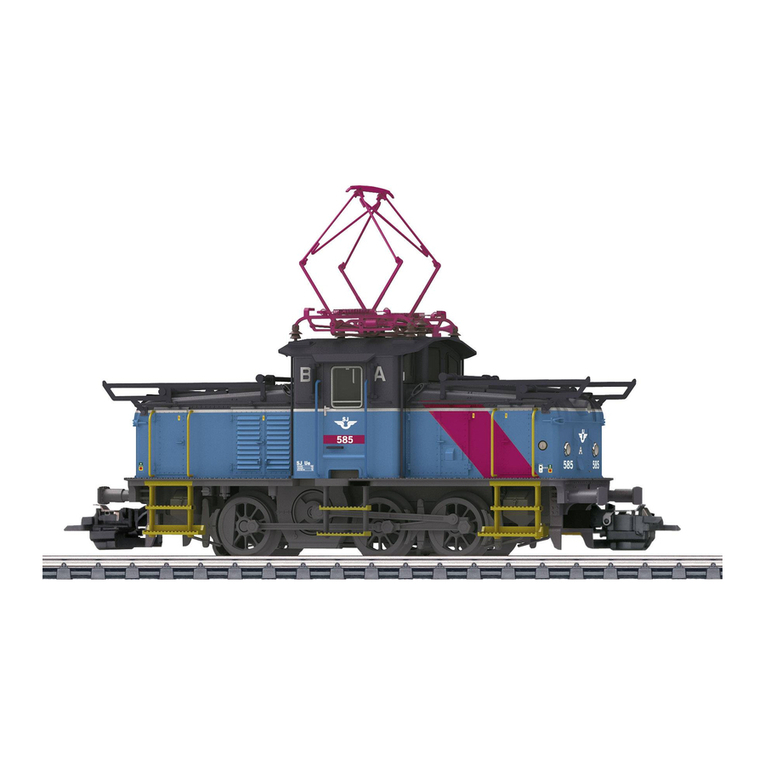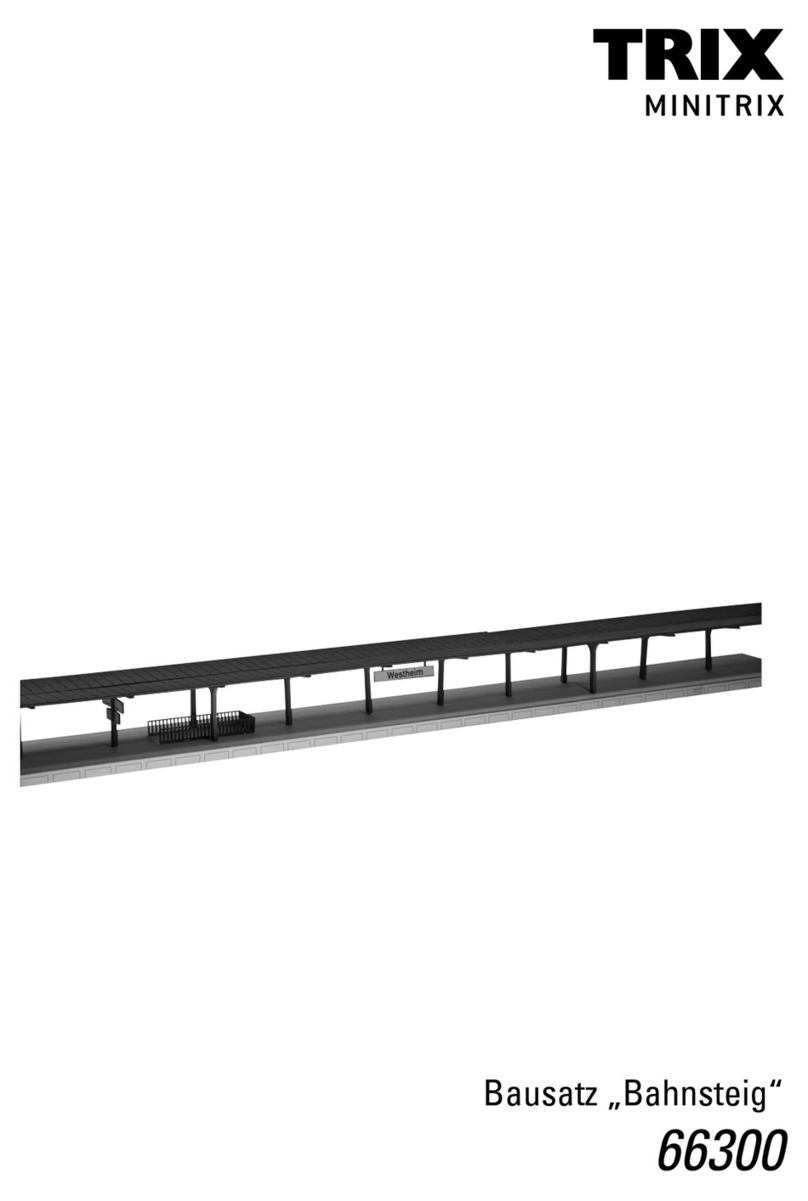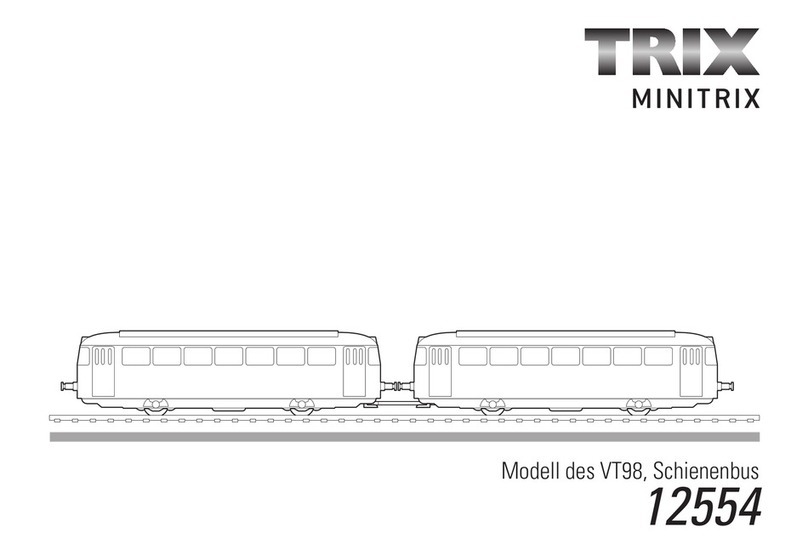7
einige Einstellungen von Funktionen, welche im Analog-
Betrieb wirksam sein sollen, vorgenommen werden.
Hinweise zum Digitalbetrieb
• DiegenaueVorgehensweisezumEinstellenderdiversen
Parameter entnehmen Sie bitte der Bedienungsanleitung
Ihrer Mehrzug-Zentrale.
• DieabWerkeingestelltenWertesindfürmfxgewählt,so
dass ein bestmöglichstes Fahrverhalten gewährleistet ist.
Für andere Betriebssysteme müssen gegebenenfalls Anpas-
sungen getätigt werden.
• DerBetriebmitgegenpoligerGleichspannungimBremsab-
schnitt ist mit der werkseitigen Einstellung nicht möglich. Ist
diese Eigenschaft gewünscht, so muss auf den konventio-
nellenGleichstrombetriebverzichtetwerden(CV29/Bit2=0).
mfx-Protokoll
Adressierung
• KeineAdresseerforderlich,jederDecodererhälteineeinma-
lige und eindeutige Kennung (UID).
• DerDecodermeldetsichaneinerCentralStationoderMobile
Station mit seiner UID automatisch an.
Programmierung
• DieEigenschaftenkönnenüberdiegrascheOberächeder
Central Station bzw. teilweise auch mit der Mobile Station
programmiert werden.
• EskönnenalleCongurationVariablen(CV)mehrfachgele-
sen und programmiert werden.
• DieProgrammierungkannentwederaufdemHaupt-oder
dem Programmiergleis erfolgen.
• DieDefaulteinstellungen(Werkseinstellungen)können
wieder hergestellt werden.
• Funktionsmapping:FunktionenkönnenmitHilfederCentral
Station 60212 (eingeschränkt) und mit der Central Station
60213/60214/60215 beliebigen Funktionstasten zugeordnet
werden (siehe Hilfe in der Central Station).
DCC-Protokoll
Adressierung
• KurzeAdresse–LangeAdresse–Traktionsadresse
• Adressbereich:
1 – 127 kurze Adresse, Traktionsadresse
1 – 10239 lange Adresse
• JedeAdresseistmanuellprogrammierbar.
• KurzeoderlangeAdressewirdüberdieCVsausgewählt.
• EineangewandteTraktionsadressedeaktiviertdieStandard-
Adresse.
Programmierung
• DieEigenschaftenkönnenüberdieCongurationsVariablen
(CV) mehrfach geändert werden.
• DieCV-NummerunddieCV-Wertewerdendirekteingegeben.
• DieCVskönnenmehrfachgelesenundprogrammiertwerden
(Programmierung auf dem Programmiergleis).
• DieCVskönnenbeliebigprogrammiertwerden(Programmie-
rung auf dem Hauptgleis PoM). PoM ist nur bei den in der CV-
Tabelle gekennzeichneten CV möglich. Die Programmierung
auf dem Hauptgleis (PoM) muss von Ihrer Zentrale unterstützt
werden (siehe Bedienungsanleitung ihres Gerätes).
• DieDefaulteinstellungen(Werkseinstellungen)können
wieder hergestellt werden.
• 14bzw.28/126Fahrstufeneinstellbar.

